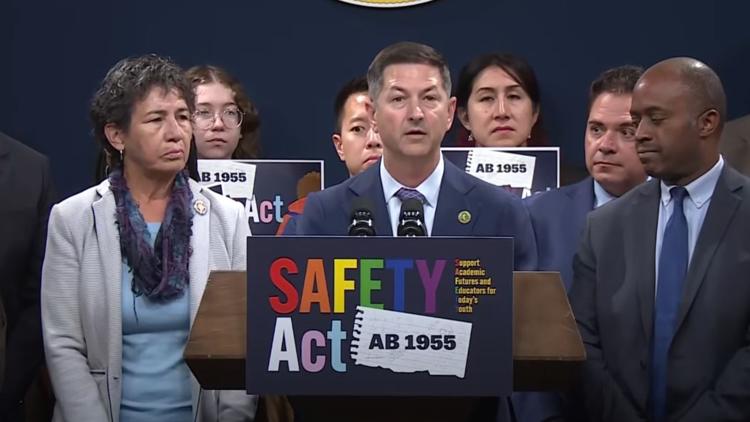Main Provisions of the Safety Act
The Safety Act encompasses a range of measures designed to ensure the safety and well-being of students within educational institutions. One of the primary objectives of the Act is to establish a comprehensive anti-bullying policy. This policy mandates schools to actively prevent, address, and report incidents of bullying, harassment, and discrimination. The anti-bullying measures are inclusive, covering all students regardless of their race, gender, sexual orientation, or disability.
Another significant provision of the Safety Act is the mandatory reporting requirement. Educators and school staff are legally obligated to report any suspected cases of abuse, neglect, or safety concerns to the appropriate authorities. This requirement aims to create a vigilant and responsive environment where student safety is prioritized and any potential threats are swiftly addressed.
The Safety Act also includes specific protections for vulnerable groups, particularly LGBTQ students. The Act enforces robust policies to protect transgender student privacy and ensures that schools have guidelines for the respectful and confidential handling of gender identity disclosure. This is crucial for creating an environment where all students feel safe and respected, regardless of their gender identity.
Moreover, the Safety Act incorporates a parental notification policy, which balances the need for parental involvement with the protection of student privacy. Schools are required to inform parents about significant issues affecting their child’s safety and well-being, while also safeguarding sensitive information that could put students at risk.
Overall, the Safety Act aims to create a safer and more inclusive educational environment for all students. By implementing these provisions, the Act seeks to foster a school culture where safety, respect, and inclusivity are paramount. The combination of anti-bullying policies, mandatory reporting, and protections for vulnerable groups underscores the comprehensive approach of the Safety Act in promoting student safety and well-being.
Impact of the Safety Act on LGBTQ Students in California
The California Safety Act introduces significant provisions aimed at enhancing the protection and privacy of LGBTQ students. One of the primary benefits of this legislation is the increased focus on preventing bullying and harassment, which have been persistent issues affecting LGBTQ youth. By mandating stricter anti-bullying policies and ensuring a safer school environment, the Act strives to create an inclusive space where students can focus on their education without fear of discrimination or violence.

However, the Safety Act has also raised some concerns within the LGBTQ community, particularly regarding the parental notification policy. This policy requires schools to inform parents about significant changes in their child’s gender identity. While intended to keep parents involved in their children’s lives, there is apprehension that it might inadvertently force transgender students to disclose their gender identity before they are ready, potentially leading to family conflict or rejection. As such, the balance between parental involvement and student privacy remains a contentious point.
Furthermore, the Safety Act’s provisions on gender identity disclosure law aim to protect the confidentiality of students’ gender identities. Schools are tasked with implementing measures to ensure that a student’s gender identity is only disclosed with their consent, except in situations where safety concerns necessitate otherwise. This aspect of the law is crucial for safeguarding the mental health of LGBTQ students, providing them with the agency to control their personal information.
The broader implications of the California Safety Act on the mental health and academic performance of LGBTQ students are significant. Creating a supportive and affirming school environment can lead to improved mental well-being, reduced absenteeism, and higher academic achievement. Schools are expected to train staff and develop programs to effectively support LGBTQ students, ensuring that the principles of the Safety Act are integrated into everyday school operations.
Overall, the California Safety Act represents a progressive step towards enhancing LGBTQ student protection. By addressing both the protective and privacy needs of these students, the Act has the potential to foster a more inclusive and supportive educational environment.
Arguments Against the Safety Act
Critics of the California Safety Act have raised several concerns, particularly focusing on the perceived infringement on parental rights and the potential for overreach by school authorities. A significant point of contention is the parental notification policy, which mandates that schools inform parents about certain actions or disclosures made by their children. Opponents argue that this policy could undermine the trust between students and school officials, discouraging students from sharing sensitive information about their gender identity or sexual orientation.
Another major criticism revolves around the balance between protecting LGBTQ student protection and respecting family privacy. Detractors fear that the gender identity disclosure law could lead to unintended consequences, such as students being outed to their families without their consent. This, they argue, not only violates the student’s right to privacy but also places them at risk of familial rejection or harm. The tension between safeguarding the well-being of transgender student privacy and ensuring parental involvement remains a deeply divisive issue.
Moreover, there are concerns about the potential overreach of school authorities under the Safety Act. Some believe that the Act grants too much power to school administrators to intervene in matters traditionally handled within the family. This perceived overreach has led to arguments that the Act could pave the way for schools to make unilateral decisions about a student’s gender identity without adequate parental input, thereby eroding the role of parents in guiding their children’s development.
Legal challenges have also been raised against the Safety Act. Opponents have argued that the Act may conflict with existing laws and constitutional rights, particularly in relation to parental authority and privacy. These legal disputes highlight the ongoing debate about the appropriate level of involvement schools should have in matters of student identity and the extent to which they should respect family dynamics.
In conclusion, the criticisms of the Safety Act underscore the complex interplay between protecting students’ rights and maintaining family privacy. As legal and social debates continue, the Act’s implementation and its impact on the school environment and family relationships remain closely scrutinized by both supporters and opponents.
The Passage of the Safety Act and Similar Laws in Other States
The journey toward the enactment of California’s Safety Act was marked by a series of significant milestones and robust advocacy efforts. Initially proposed in response to growing concerns about transgender student privacy and LGBTQ student protection, the legislation garnered attention from various stakeholders, including educational institutions, civil rights organizations, and parent groups. The legislative process began with extensive consultations and public hearings, where advocates highlighted the urgent need for comprehensive measures to ensure the safety and well-being of all students, regardless of their gender identity.

One of the pivotal moments in the development of the Safety Act was the coalition of advocacy groups that championed the cause. These groups played a crucial role in raising awareness, mobilizing public support, and lobbying legislators. Their efforts underscored the importance of creating a safe and inclusive environment for transgender students, emphasizing that any parental notification policy must be balanced with the students’ right to privacy and autonomy. The legislative process was characterized by rigorous debates and amendments, ultimately leading to a law that reflects a nuanced approach to student safety and gender identity disclosure.
Comparatively, other states have adopted varied approaches to similar issues. For instance, states like New York and Massachusetts have enacted laws that emphasize LGBTQ student protection with provisions similar to California’s, focusing on anti-bullying measures and inclusive policies. Conversely, states such as Texas and Florida have taken a different stance, with stricter parental notification policies and less emphasis on gender identity disclosure protections. This divergence highlights the ongoing debate over the balance between parental rights and student privacy across the nation.
Despite these differences, a common thread among these laws is the recognition of the need to protect vulnerable student populations. While the specifics of each law may vary, the overarching goal remains the same: to create educational environments where all students feel safe, respected, and supported.




